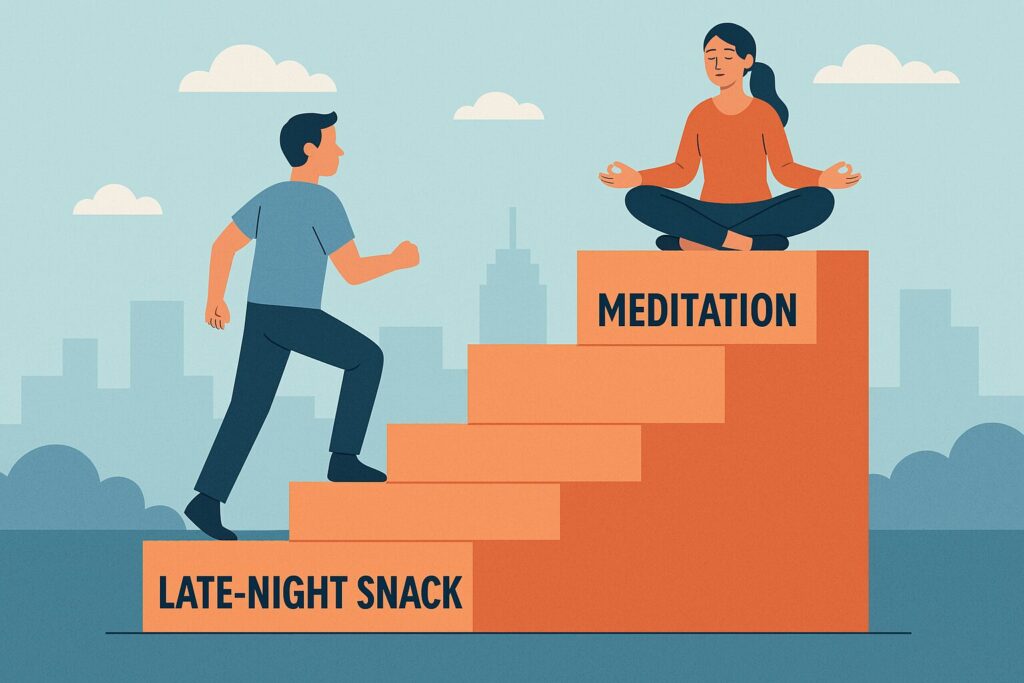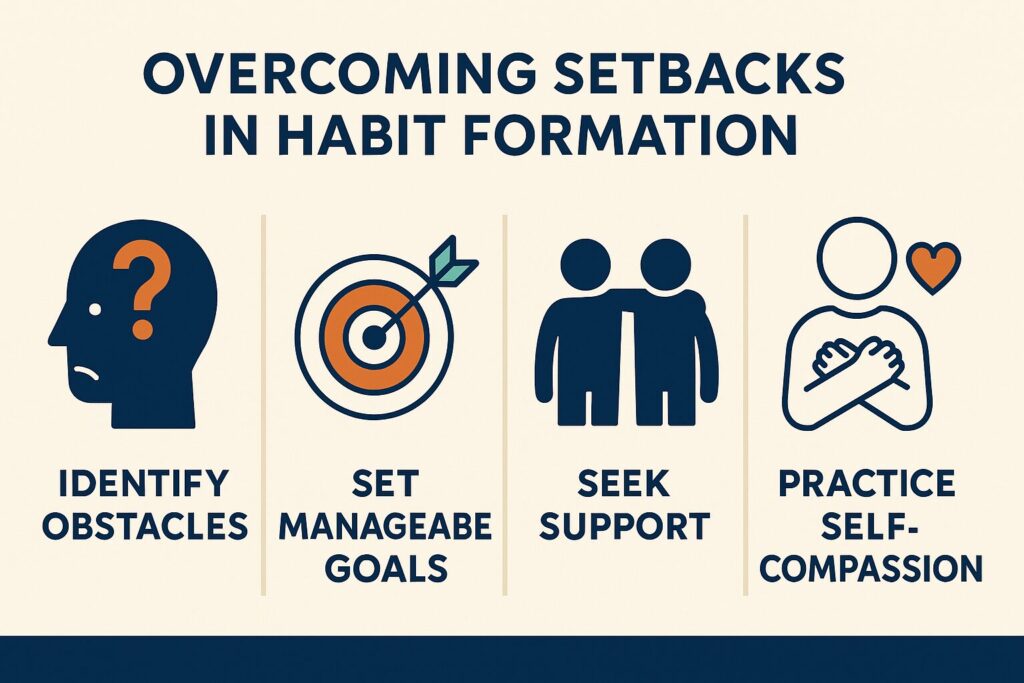The Science Behind Habit Formation And How To Use It
Habits. They’re the little autopilot actions that shape our lives—often without us even realizing. From the way we tie our shoes to how we wind down after a long day, our routines are built on a foundation of habits. But what’s actually going on inside our brains? And more importantly, how can we use that science to create habits that stick?
This deep dive into the science behind habit formation will walk you through exactly how habits are formed, the psychology and neuroscience behind them, and give you practical strategies for building the routines you actually want in your life.
What Is Habit Formation?
At its core, habit formation is a learning process. It’s how the brain saves energy. Instead of making a million little decisions every day, habits allow us to operate on autopilot for the stuff we do regularly.
Think of habits as mental shortcuts. Instead of consciously thinking through every action—like brushing your teeth or starting your car—your brain runs through a well-rehearsed script.
Conscious Actions vs. Habits
- Conscious actions require deliberate thought (e.g., choosing a new workout routine).
- Habits are automatic responses to specific triggers or cues (e.g., brushing teeth after waking up).
Understanding the difference is step one in mastering your own habits.
The Neuroscience of Habit Formation
Let’s geek out for a second.
The core model behind habit science is the “habit loop”, a term popularized by Charles Duhigg in The Power of Habit. This loop consists of:
- Cue – A trigger that tells your brain to go into automatic mode
- Routine – The behavior itself
- Reward – What your brain gets out of it, reinforcing the loop
![Featured Image Idea: A simple diagram showing the habit loop with cue, routine, and reward highlighted with brain imagery in the background.]
Your Brain on Habits
The basal ganglia is the part of your brain responsible for habit formation. When an action is repeated over time, the basal ganglia takes over, allowing your brain to “chunk” the behavior and make it automatic.
And then there’s neuroplasticity—your brain’s ability to rewire itself. It’s how you can form new habits or break old ones, regardless of age. With repetition, your brain literally builds new pathways to support the behavior.
Real-world example:
Think of someone who quits smoking. The old pathway says, “smoke when stressed.” By creating a new response (deep breathing or chewing gum), they teach the brain a new route to take when stress hits.
The 4 Stages of Habit Formation
While the habit loop is useful, modern psychology often breaks habit formation down into four distinct stages:
- Cue – What triggers the behavior?
- Craving – What desire is associated with it?
- Response – The actual behavior
- Reward – The benefit or outcome
Each stage plays a role in how powerful a habit becomes—and how hard it can be to break.
The 3-3-3 Rule for Habits
A simple technique for beginners is the 3-3-3 rule:
- 3 minutes a day to start a new habit
- 3 days in a row to build momentum
- 3 weeks to make it automatic
This approach helps remove the pressure of perfection and encourages consistency, which is far more important than intensity in the early stages.
Why Bad Habits Are So Hard to Break
Let’s be real—bad habits feel good. That’s the problem.
They often provide instant gratification, which is a powerful dopamine hit for your brain. Whether it’s scrolling social media, snacking at midnight, or skipping workouts, these actions are rewarded immediately, even if the long-term consequences are negative.
To break them, you have to interrupt the cue or replace the reward with something more beneficial.
Habit Formation in Real Life: Modeling Behavior Change
Let’s look at some practical, everyday examples of habit changes:
Example 1: The Morning Routine Overhaul
- Old Habit Loop:
- Cue: Alarm goes off
- Routine: Check phone
- Reward: Dopamine hit from notifications
- New Habit Loop:
- Cue: Alarm goes off
- Routine: Drink a glass of water and stretch
- Reward: Feeling refreshed and energized
Example 2: Replacing the Snack Attack
- Old Cue: Afternoon slump
- Old Routine: Grab sugary snacks
- New Routine: Take a 5-minute walk or eat fruit
- New Reward: Boost in energy + no sugar crash
How to Build Better Habits—Step-by-Step
1. Identify Your Cues
Track your behavior for a few days. What time, place, emotion, or action sets it off?
Pro Tip: Use a habit tracker app or just jot notes in your phone’s Notes app.
2. Choose One Habit at a Time
Start small. Really small. Want to meditate daily? Start with 60 seconds a day. Trying to write every day? Aim for just one sentence.
3. Make It Obvious and Easy
Your brain likes low-hanging fruit. Put your workout clothes next to your bed. Set your journal on your pillow.
“Don’t rely on motivation. Design your environment.”
4. Tie It to an Existing Habit (Habit Stacking)
- After I brush my teeth, I’ll do 5 push-ups.
- After I pour my morning coffee, I’ll write down 3 things I’m grateful for.
5. Celebrate Immediately
A mini fist-pump, smile, or “good job” matters more than you think. That instant reward helps cement the habit loop.
What to Do When Habits Slip
We all fall off the wagon. The key is to not let one slip become a downward spiral.
Common Habit Challenges:
- Overwhelm – Trying to change too much at once
- Impatience – Wanting fast results from slow change
- Lack of Clarity – Vague goals like “get healthy” instead of “walk 10 minutes daily”
How to Bounce Back:
- Forgive yourself – Self-compassion is powerful
- Recommit with clarity – Go back to basics
- Lean on others – Accountability helps. Join a group or text a friend
“You don’t rise to the level of your goals. You fall to the level of your systems.” – James Clear
Final Thoughts: Harnessing Habit Science for Real Change
The science behind habit formation isn’t just fascinating—it’s empowering. It shows us that change isn’t just possible, it’s predictable when we follow the right steps.
Start small. Track your cues. Design your environment. And give yourself the space to grow, slip, learn, and bounce back. Habits are not destiny—they’re tools. And with the right knowledge, you’re in control of the habits that shape your future.
Ready to Build Better Habits?
Drop a comment and share the habit you’re working on! Want more tips like this? Subscribe for weekly updates on productivity, neuroscience, and personal growth.
Hi there, and thanks for stopping by! My name is Larry, and I’m the voice behind BroBlogger.com. This blog is my corner of the internet to share insights, experiences, and thoughts on the things that shape our lives—Lifestyle, Love, Money, and Health. Thanks for stopping by, feel free to subscribe and comment. Thank You! Larry Mac
P.S Are you Interested in Blogging? Click here to See How I started!






